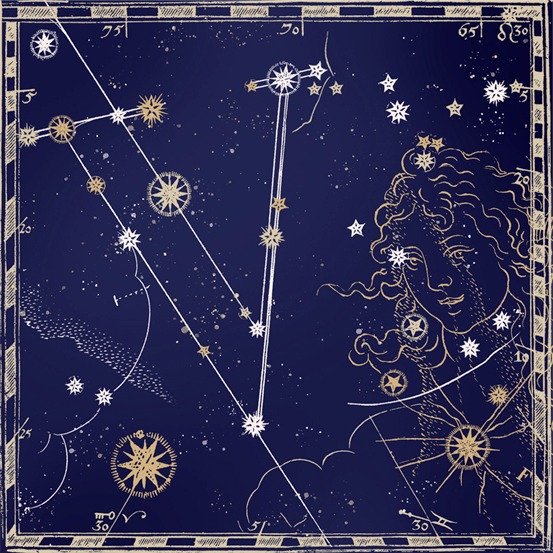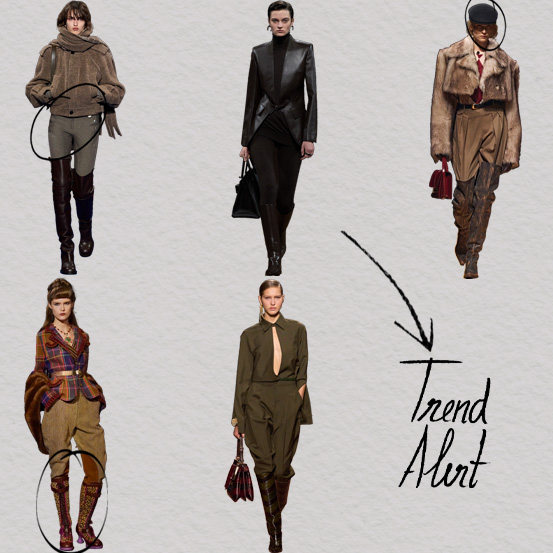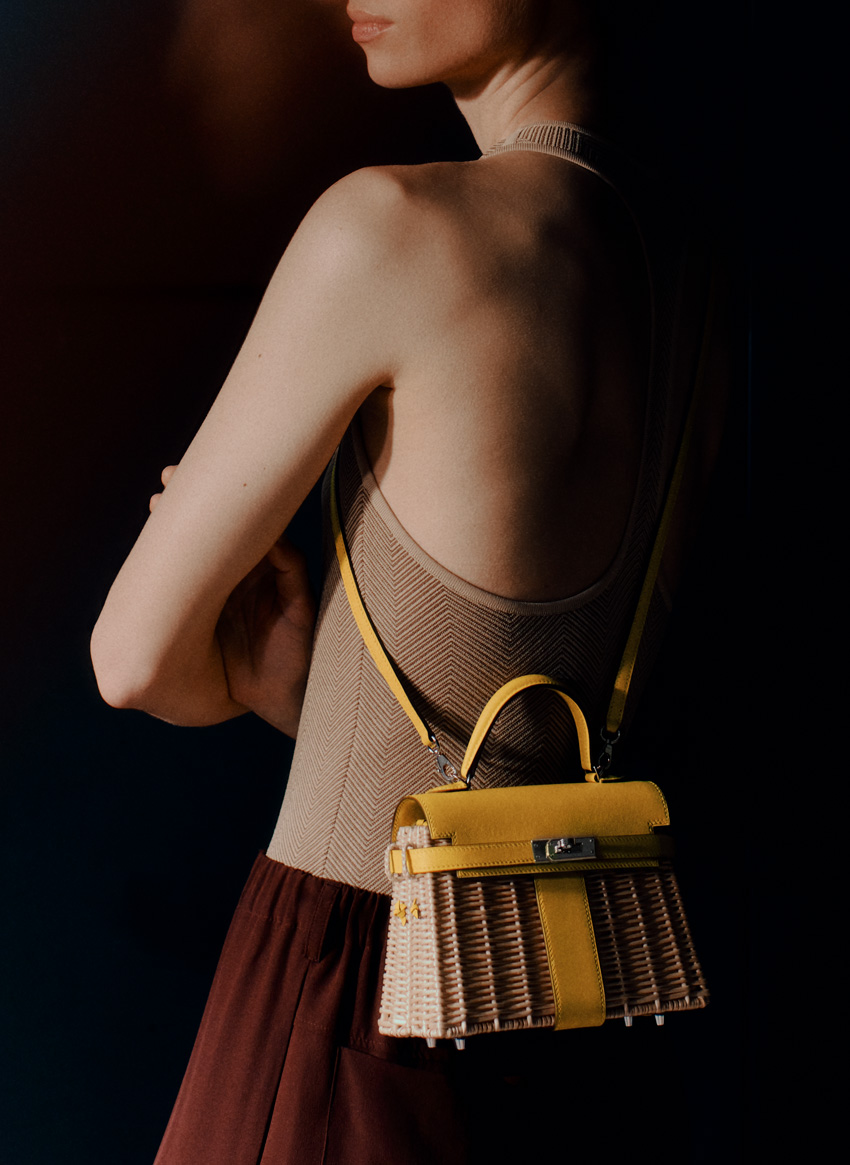Behind every Birkin and Kelly lies incomparable craftsmanship – which even has a Portuguese touch (Priscila Alexandre Spring is the creative director of leather goods at Hermès). In a conversation with the Portuguese woman in Paris, we realized that an icon isn't just about the end product, it's also about the art it contains.
Some brands are one-hit wonders; others become absolutely timeless icons. It is in the latter category that, between the legendary Birkin and Kelly bags and a DNA that praises the preciousness of craftsmanship, Hermès is unquestionably positioned. Since its foundation – by the hand of Thierry Hermès in 1837 – the French maison has looked to its equestrian origins to awaken sensory memories through pieces that are true works of art. With unparalleled mastery and creativity, Hermès excels in quality and places its signature leather at the heart of its métiers. Nowadays, the maison has a Portuguese presence in its ateliers: the daughter of a Portuguese father and a Mozambican mother, Priscila Alexandre Spring grew up in national territory, but now calls Paris home where, since 2020, she has been responsible for the creative direction of leather goods at Hermès. With a degree in fashion design and a passion for the traditional, Spring looks to the established codes of the maison as a source of inspiration for her creativity. “You have to be curious and learn the methodology behind the creation of bags – and Hermès has a very specific philosophy,” she tells us. “Over time, I've felt freer to break the rules of the past. But I think it's always important to look to the past to write a new present or future, even if it's to do something completely different.”
In the Hermès universe, creativity knows no limits, and anything seems possible in the maison's leather goods métier. In a union between form and function, the French fashion house's timeless leather goods emerge as authentic sentimental artifacts. With meticulous savoir-faire and a range of textures, color palettes and finishes, Hermès unites three absolute realities in its leather goods: respect for the brand's history, the evolution of artisanal processes that have been passed down from generation to generation and the intertwining of desires and feelings that its pieces arouse – in a kind of love at first sight (“when we buy a bag, it's not a rational act,” says the designer. “When we go to Hermès, we're looking for quality and that kind of emotions"). In this dialog between the imaginary and the real, the creative process around Hermès leather accessories combines different trades and skills. “It's a very organic and intuitive process. [...] It's a continuous observation of the world,” she reveals. “Every time we create a new collection, we consider how we can evolve and what kind of functionality we're looking for. [...] Then it's a mixture of everything: intuition, a ping-pong with the artisans – when we have an idea, we go to them and talk.”
Hermès leather goods are made exclusively in France and each leather design atelier employs around 15 artisans who defy the boundaries of the maison's craft techniques. When a concept for a bag arises, there is a certain creative impulse that questions paradigms and enhances the individuality of all the maison's leather pieces. Among the various models of handbags presented during the Hermès women's ready-to-wear collections, around twelve will be – every year – totally new designs that transcend the workshop and see the light of day each year. This is because each Hermès bag takes between one to two years to be completed and reach the stores. The fashion house is faithful to the “one person, one bag” philosophy, in which each craftsman follows the process of creating a leather good from A to Z – from the first to the last stitch. “This is something that sets us apart from other maisons. [...] That's why I say that the bags have an indescribable aura, because you feel the craftsman behind each bag and you feel the attention and care that has gone into it.” In a maison that sees its timelessness as something that is constantly evolving, this approach allows the artisans to leave a little of themselves in each piece they create.
With a standard that leaves no room for illusion, it is the work of the artisans that guarantees the authenticity and durability of each piece. Along with luxury leather goods, Hermès has an in-house dictionary with a very specific and incredibly technical vocabulary; to create pieces that are both poetic and functional, the artisans responsible for developing the bags undergo meticulous training that details each material and creative process. “When one wants to train an artisan, they usually start with a Kelly, as it's the most complete bag for experimenting with different techniques,” says Priscila Alexandre Spring; by mastering the process of making a Kelly, an artisan is able to apply and adapt their know-how to other models of bags. The whole process is very artisanal and, in addition to detailed training, the artisans receive their own set of tools. Usually, no craftsman lends his tools, and over time, they become accustomed to the uniqueness of the hands that handle them – which creates a special relationship between the creator and his tools. After a year's work in the maison's workshops, each craftsman receives a personalized stamp that acts as a method of professional recognition, allowing each bag to be associated with a specific employee. After being developed in the atelier - and before going into production – all Hermès bags are tested for six months to ensure that there are no flaws or parameters that need to be re-evaluated or adjusted. The processes of acquiring a Hermès bag are notoriously complex and enigmatic – so it's not hard to believe that the waiting list of volunteers for this test period is incredibly long. However, this opportunity is reserved for the artisans of the leather goods métier: “It's important that they are members of our team and our department, because they are honest and tell us what is and isn't working. They are very open about it and pay attention to certain details that people might want,” says the designer.
There are icons that are so for a proven reason, and at Hermès, leather is one of the contours that gives the maison such enviable status. The brand's leather has an inimitable quality, and each piece is as unique as the material it is made from. Since it was founded, Hermès has developed around two thousand shades of leather and today continues to focus on developing its leather goods palette. “As we say, our bags are as beautiful on the inside as they are on the outside,” says the maison's creative director of leather goods. The art of craftsmanship is so highly valued at the fashion house that it's even an inspiration. Although creativity comes from the most varied sources and takes on different forms, sometimes Hermès' artisanal legacy appears as more than a tale passed down from generation to generation and becomes a starting point for some unexpected creations. As a constantly evolving challenge, creating in the light of the house's own craft ensures that the art doesn't disappear, and introduces the maison's savoir-faire to a new generation. Moreover, as Spring recognizes, we are who we are and, having grown up in Portugal, the designer conveys a little of her Lusitanian soul to Hermès' iconic leather goods. Her grandmother embroidered scarves by hand, and cultivated a taste for perfection, always stressing the back had to be as beautiful as the front. Through her father, respect for the material was transmitted: “[I learned from my father that] each material teaches us and guides us as to the best way to work with it. It's as if the material is always right,” she says. This motto has stayed with her since she was a child, and today she recognizes its importance when she sees it mirrored in Hermès' savoir-faire. In a tribute to handmade objects, each bag can be taken apart and restored, as all the parts can be replaced. Whether it's a Birkin or a Constance, each bag from the French maison is thought out (and designed) with durability in mind – and the aim is to become more and more beautiful as the years go by. “We try to create something for the long term that we hope will stand the test of time. That's what we try to do with each new bag we create,” she says. It's something that is at the heart of the creative process and has become a distinctive mark of the maison.
Beyond myths and workshops, Hermès bags have become icons in their own right. The mythical Birkin was the result of an unusual meeting between Jean-Louis Dumas, chairman of Hermès in 1984, and Jane Birkin, during which the actress confessed that she had yet to find a bag that perfectly suited her day-to-day life as a mother. Today, the model is one of the maison's main anchors and, among countless versions – such as the Birkin Shadow with its trompe-l'œil or the Birkin So Black with black hardware – the bag represents an absolute status symbol. The Kelly – a model that combines the house's traditional aesthetic with a radical design – originally appeared in the 1930s, but reached stardom during the 1950s, when actress and princess Grace Kelly was photographed wearing it on several occasions. Eternally chic, the bag is available in a variety of shapes and styles. Among Priscila Alexandre Spring's favorites, in addition to the iconic Birkin and Kelly, are the Pippa chair, the Œil magnifying glass and the Plume bag. However, the designer emphasizes that it is the meticulous craftsmanship, and not a specific piece, that separates Hermès from other fashion houses and establishes it as a renowned maison.
With unrivaled savoir-faire, it is in the Hermès atelier that some of the most beautiful leather works of art are born. Within the four walls of the brand's workshops, time is suspended, and the preciousness of the craftsmanship speaks for itself. Outside, in a world in constant movement, Hermès is the ultimate icon and remains an inescapable symbol in the world of leather goods.
Translated from the original on "The Icons" issue, published November 2024. Full credits and stories in the print issue.
Most popular


Relacionados

LightHouse Publishing x Street Smash Burgers: uma noite no escritório da Vogue Portugal
19 Dec 2025
 (14).png)




